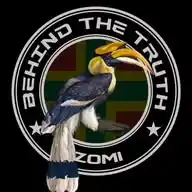
𝔹𝔼ℍ𝕀ℕ𝔻 𝕋ℍ𝔼 𝕋ℝ𝕌𝕋ℍ (𝔹𝕋𝕋)
February 3, 2025 at 04:32 AM
*Day 15: The Panglong Agreement – A Fractured Future*
In 1947, Zomi leaders arrived at the Panglong Conference with a vision rooted in autonomy, unity, and self-governance. For centuries, the Zomi had moved freely across what would soon become the borders of India and Burma, bound by kinship, culture, and a shared history rather than arbitrary lines on a map. With the formalization of the India-Burma border in 1947, Zo leaders in India and Myanmar were compelled to forge their futures within the new nation-states they had suddenly become part of.
At Panglong Burma, they sought recognition for their sovereignty, hoping to shape a future where their rights were protected. What followed, however, was not self-rule—it was betrayal.
The Panglong Agreement, signed on February 12, 1947, had promised equality and self-determination to Burma's ethnic minorities. Just eight days later, on February 20, 1947, Zomi leaders convened in Falam to discuss their place in this new political order. Their decision was clear—they would unite the various Zomi-inhabited districts into a Chin Special Division and declare February 20 as Zomi National Day, a symbolic assertion of their collective identity. But the ink had barely dried before those promises were shattered.
*A Promise Broken:*
The assassination of Aung San in July 1947 removed the one leader who had genuinely championed federalism. His successors in Rangoon abandoned the agreement, replacing the vision of Panglong with a highly centralized Burman state. The Zomi, who had signed the agreement in good faith, were sidelined. Burma's first constitution, while nominally creating a "Special Division" for the Chin Hills, failed to give any real authority to Zomi leaders. Funds for development remained under Burman's control, and Zomi's representation in decision-making bodies was almost nonexistent.
However, The deepest wound Panglong inflicted was not just political neglect—it was the fracturing of the Zomi people. Borders were drawn without their consent, arbitrarily splitting the Zomi across India and Burma (later Myanmar). What had once been a single people living in a fluid frontier space was now forcibly divided. As one Zomi elder said, "We did not cross the border—the border crossed us."
For decades, the Free Movement Regime (FMR) between India and Myanmar provided a small relief, allowing Zomi families to visit each other without visas. The FMR was originally meant to allow Movement of upto 40kms for the transborder ethnic communities. Despite the several insurgencies that occurred in the region, the FMR held strong: a testament to India's constitutional democracy and federal spirit.
Over time, this was reduces to 16 kms in 2015, a great damage to the indigenous communities in the region. But in February 2024, the biggest blow came when the Indian government revoked the FMR, severing a vital link between Zomi communities. Overnight, villages that had been part of the same cultural and economic network for centuries were cut off from one another. Many Zomi in India are now labelled as refugees, while those in Myanmar face state suppression and economic marginalization. Their transborder identity—a reality for generations—is now under threat, forcing many to choose between belonging to a nation-state and preserving their cultural heritage.
*The Struggle for Recognition:*
In Burma, the economic disparity between Burman-majority regions and the Zomi homeland became stark. While Rangoon and Mandalay flourished, the Chin Hills were left in deliberate neglect. Infrastructure bypassed Zomi areas and state resources were directed elsewhere. Burmese was declared the national language, marginalizing the Zomi language and education. Frontier histories were erased in universities, reinforcing a system designed to suppress non-Burman cultures.
By the 1950s, the Zomi began demanding greater autonomy in India and Myanmar. When their requests were ignored, these demands turned into calls for secession. The Burmese government, refusing to honour the right to self-determination enshrined in the 1947 Constitution, cracked down on dissent. By the 1960s, Zomi political movements advocating independence began to take shape. Groups like the Chin Liberation Army (CLA) and Chin National Organization (CNO) and the Mizo National Front/Army (MNF/MNA) emerged, seeing armed resistance as the only viable path toward self-determination.
The struggle that followed was not just about land or political power—it was about reclaiming a future that had been stolen. The Zomi National Day, which was declared in 1947, was meant to celebrate unity, but today, it serves as a reminder of what was lost. Borders split apart a people once whole they never consented to, forced to navigate a fragmented identity in a world that rarely acknowledges their existence.
*A Fractured Future:*
The betrayal of Panglong continues to shape the reality of the Zomi today. As Zomi identity is increasingly put at stake—through political exclusion, forced migration, and cultural suppression—the struggle for recognition remains ongoing. The Zomi are not just fighting for land or governance; they are fighting for the right to exist as one people, unrestricted by artificial borders.
*Reflection:*
What happens when a person's identity does not fit within the borders drawn for them? How do communities like the Zomi navigate marginalization while holding onto their cultural heritage?
*Quote to Highlight:*
"We did not cross the border—the border crossed us. And yet, we remain.
BTT
🔴🟡🟢
https://whatsapp.com/channel/0029VaYCqe71yT229xZ6f42y
❤️
👍
😂
🙏
45